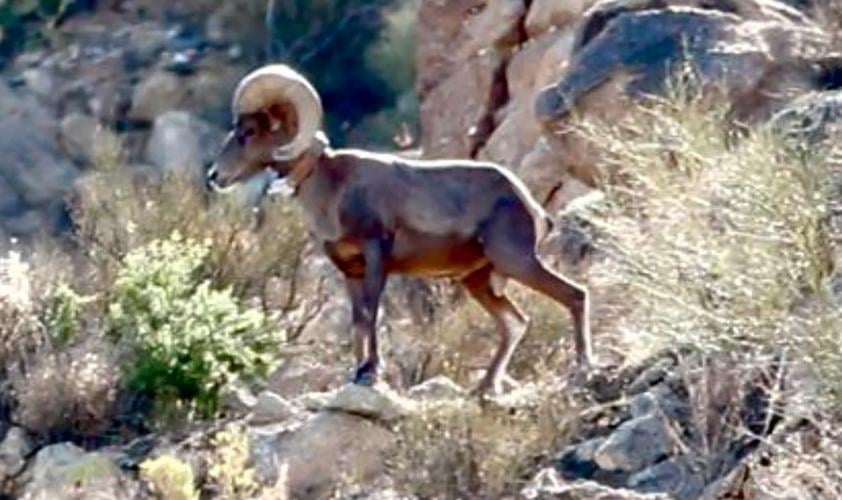An estimate from March says as many as 85 bighorns may be in the Catalinas, but that number has not been confirmed.
Bighorn sheep appear to be enduring in the Catalina Mountains today — four years after efforts began to re-establish a herd in the range, state wildlife officials say.
But they emphasize it’s difficult to get an exact population estimate because GPS monitoring collars on many of the bighorns have become inoperative over the years.
“We have 32 collars operating, so we know we have at least 32 sheep in the Catalinas,” said Mark Hart, spokesman for the Arizona Game and Fish Department.
The actual number of animals roaming the range north of Tucson is likely more than double that number, Hart said, citing the fact that fewer than 50 percent of Catalina bighorns had operative GPS collars as of last year. Many, or most, of those without collars are probably alive, he said.
“We also had 19 lambs born this year” based on observations by wildlife officers, Hart said, noting that the herd has had an unusually high lamb survival rate of 50 percent.
He said current data on the population aren’t sufficient to confirm an estimate in March of this year that about 85 bighorns lived in the Catalinas.
“We would characterize the bighorn population as stable, with the size of it as of yet undetermined,” he said. “There is no evidence of disease or that there have been a lot of kills by mountain lions. We have had two mortalities caused by mountain lions since the last release” of bighorns in the range about a year ago.
That number of predation deaths isn’t out of the ordinary, Hart said. He said a policy of pursuing predatory lions was discontinued last fall.
PROJECT HISTORY
A bighorn sheep advisory committee, working with the Game and Fish Department, recommended in 2013 that the department reintroduce bighorns to the Catalinas. The species had disappeared from the range in the 1990s.
Thirty bighorns, from thriving herds elsewhere in Arizona, were brought to the Catalinas in November 2013, with additional sheep brought to the range in November of 2014, 2015 and 2016.
Bighorn deaths resulting from mountain lion predation and disease plagued early stages of the reintroduction project. But the population appeared to stabilize when sheep congregated in steep, rocky habitat in the Pusch Ridge area of the Catalinas.
Hart said the population today is “kind of scattered — from the Pusch Ridge area all the way to Ventana Canyon” east of the ridge.
AERIAL SURVEY INCONCLUSIVE
An aerial survey of the herd’s habitat was conducted Sept. 30, but Hart said a reliable population estimate won’t be available until wildlife officers analyze photos from the survey.
He said the number of sheep spotted from the air — 19 — is not only fewer than the 32 known collared animals, but far fewer than an expected total of 64 or more based on estimates of uncollared bighorns and lambs.
“It was so warm during the survey that sheep were not moving” and therefore were not easily visible, Hart said.
“We will possibly do a ground survey in November,” he said. “It would be cooler then and the sheep would be moving.”





